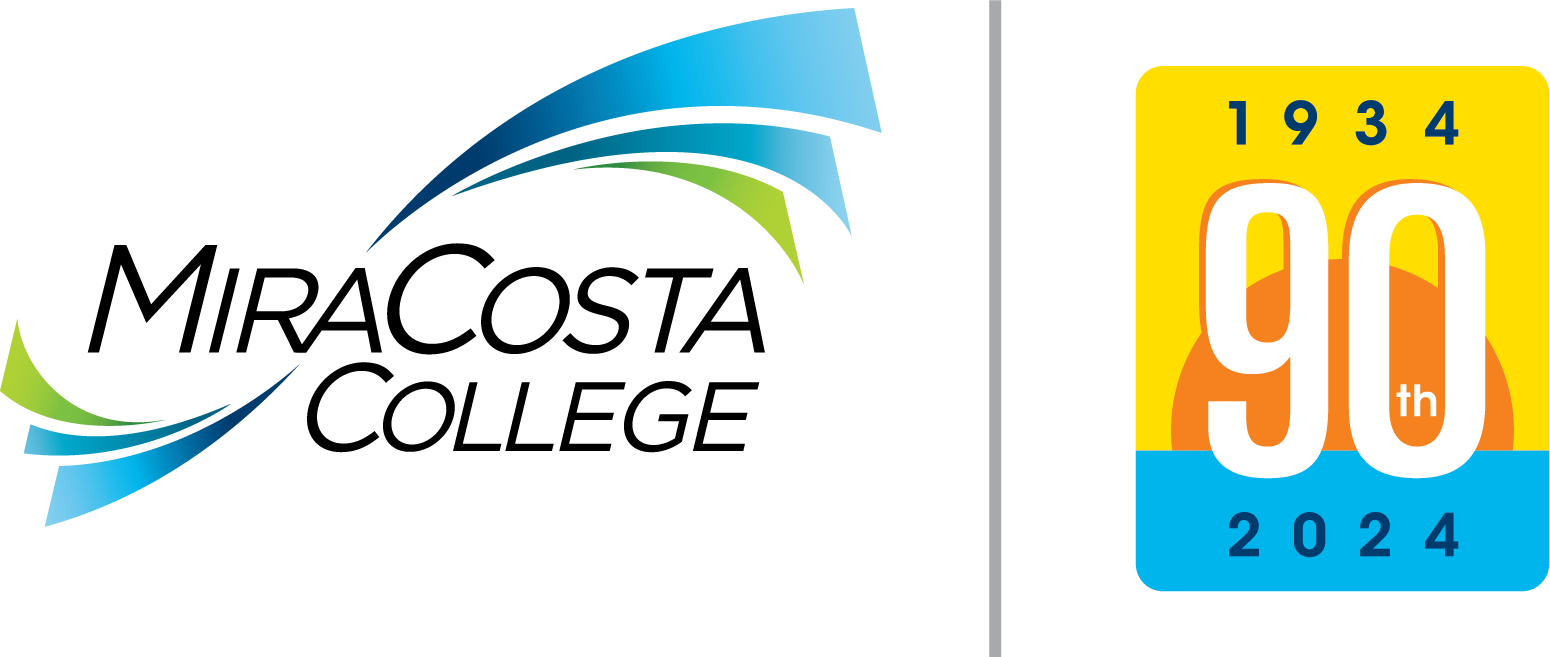The Gender Recognition Act (California Senate Bill 179) went into effect January 1, 2019. The bill makes the process easier for Californians to apply to change their gender markers on California birth certificates, drivers’ licenses, gender-change court orders and identity cards. Most significant, the bill creates a non-binary gender category (the letter “x”). These easier processes will allow many people in our community, including trans, intersex and non-binary people, to have full recognition in the State of California.
Read the frequently asked questions below to learn more about the implications for our work at MiraCosta.
FAQ
What is the California Gender Recognition Act?
The Gender Recognition Act (California Senate Bill 179) went into effect January 1,
2019. This bill may sound familiar to you and that is because aspects of this bill
have been put into effect since January 2018. Now the bill will be completely put
into law. The text of the bill is available online. The bill makes the process easier for Californians to apply to change their gender
markers on California birth certificates, drivers’ licenses, gender-change court orders
and identity cards. Most significant, the bill creates a non-binary gender category
(the letter “x”). These easier processes will allow many people in our community,
including trans, intersex and non-binary people, to have full recognition in the State
of California. The law was authored by Sens. Toni Atkins (D-San Diego) and Scott Wiener
(D-San Francisco) and sponsored by Equality California and the Transgender Law Center.
How does the GRA impact MiraCosta College?
Many aspects of our college system relies on a binary gender classification (woman/man).
In order to make sure that all of our students and employees are being served at the
highest level of excellence changes will be made to those systems binary gender systems
so that people with non-binary gender makers are accounted for.
What steps did MiraCosta take that we should be aware of?
MiraCosta initiated a campus wide survey to take inventory of the scope of work that
needed to be done to make sure that people with “x” gender markers are appropriately
cared for within our processes and systems. A working group identified and coordinated
the necessary changes. Simultaneously, our LGBTQIA+ equity specialist hosted a GRA information session that was open to the entire campus. That information session went over basic information
regarding the bill and its impact.
I have more questions, who can I talk to?
The GRA working group has concluded its work however, if you have questions about
the legislation's impact on MiraCosta and potential work in your department please
reach out to:
Nick Mortaloni, Dean of Student Affairs
nmortaloni@miracosta.edu
Jenn Acfalle, Director, Human Resources
jacfalle@miracosta.edu
If you have a question about the GRA in general or would like more information on non-binary gender identities please reach out to:
SPHERE
lgbtqia@miracosta.edu
Why is this important?
The Gender Recognition Act is one huge step toward equity and protection for trans,
intersex, and non-binary individuals. This legislation means that now individuals
will have their identities legally recognized. For many trans people across this nation,
the old process of getting their gender legally changed included a series of intrusive
medical assessments and long, demeaning interviews with psychiatrists in order to
‘prove’ their identity. For intersex and non-binary individuals there has been no
process that would allow for a legal recognition of their identity. The Gender Recognition
Act, makes this aspect of life a little bit easier for trans, intersex, and non-binary
people, affording them with the respect, recognition, and self-determination that
they deserve.
Further, this legislation will help make it easier for organizations to provide adequate services and support for the trans, non-binary, and intersex communities. Regardless of your role on this campus, it is all of our responsibility to make sure that we uphold MCCD Board Policy 3400.
“MiraCosta College is committed to providing a strong, supportive, and authentic environment where difference is valued, respected, encouraged, and honored; where all faculty, staff, and students experience a sense of belonging and the freedom to express themselves; and where their experiences are recognized and valued. MiraCosta College strives to be a model for equity and inclusion.”
Is non-binary the same as intersex and transgender?
No, non-binary, intersex, and trans are three separate terms. Here are some definitions:
- Non-binary
Gender identity and expression is often organized on binary. That’s to say that man and masculinity is on one end of the binary; and woman and femininity is on the other side. Non-binary, unlike cis-gender people do not see their gender identity as fitting on this strict binary. It is important to note that the term non-binary is at times used as an umbrella term, people whose identity exist outside of the binary may use terms like agender, gender fluid, genderqueer, gender non-conforming, etc. to describe themselves. It is also important to know that trans people's identity may fall within the binary and that others do not. Further, non-binary people may use the pronouns “they/them” in the singular, or their name as as well as she/her/he/him/ze/zer and many more. - Intersex
Just like gender, biological sex is often thought of in binary terms (male and female). This is assigned at birth (and sometimes earlier if the parent requests to know the sex of their baby) and is typically done by examining the baby’s genitalia. However, what we know is that this does not account for all of the variations that occur biologically. Some people are born with chromosomes, gonads, sex hormones, cells that respond or don't respond, SRY genes and/or genitalia which do not meet the medical standards of male or female; standards that are often transphobic in their very nature.. These infants are labeled as intersex. For more information please visit www.isna.org - Trans
Trans is an umbrella term used to describe people whose identity does not match what was expected based upon the sex that they were assigned at birth. For example, someone who was assigned male at birth yet is a woman, may identity as a transwoman (or simply woman, not every trans person identifies with the term 'trans'). Trans people's identity may fall within the binary (man, woman) and some may not (non-binary, gender fluid, Two-spirit, etc.). Just as trans people may or may not have been born with intersex traits. - Cis-gender
People whose gender identity is aligned with the sex that they were assigned at birth. For example, a cis-gender who was assigned female at birth and is a woman has the gender identity of woman.
How do I address someone who is non-binary?
It is very important for us to remember that you cannot tell someone’s gender just
by looking at them. Most of the time we are making assumptions based upon the transphobic
messages we have internalized about the meaning assigned to how someone presents themselves.
Sharing your pronouns and asking people for the pronouns they use will prevent our
wrong assumptions from causing undue harm and emotional distress. Keep in mind, people
are entitled to not share their pronouns with you and if that is the case please use
their name in place of pronouns. Do not default to they/them pronouns.
Here are some phrases and questions you can use:
- “Do you feel comfortable sharing your pronouns with me?”
- “My name is Dan, and my pronouns are he and him. What about you?”
** A quick note about honorifics **
A honorific is a title that conveys respect and honor. Some common honorifics are: Ms., Mr., Mrs., Miss, and Dr. In many cases we address formal letters and emails by stating, “Dear Ms.______” and when receiving important phone calls we may hear, “Hello, may I speak to Mr._____.” For those who are cisgender and not familiar with honorifics outside of these it may be confusing to know which honorific to select if you are unaware of a person's gender identity. Here are some suggestions:
- Ask. The best thing you can do in this situation is to ask the person how they’d like to be addressed.
- Use the person’s full name and do not use add a honorific.
- If the person has an honorific related to their occupation such as “Dr.,” “President,” “Captain,” “Rev.,” then use that instead of one that implies a particular gender.
- Only use “Mx.” Mx (pronounced mix) if the person has communicated that this is the honorific the person uses. This term has been embraced by some non-binary individuals and some feminists who do not use honorifics that are based upon marital status.





